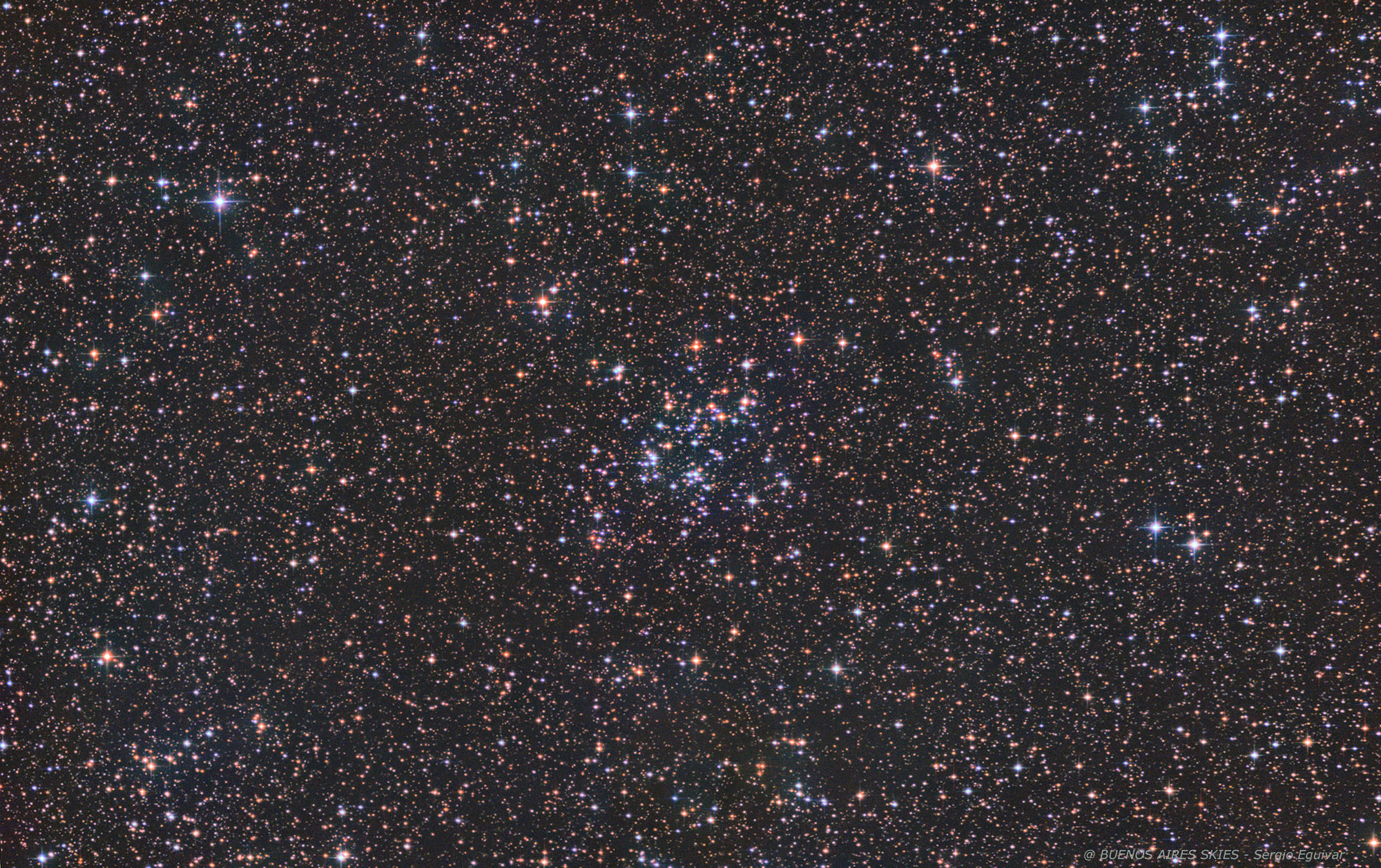
0222222222222222222222222222222222222222222222222222222.
| HOME |
NGC 4852
OPEN CLUSTER IN CENTAURUS (THE CENTAUR)
(Image centered at: ra 13 h: 00 m / dec -59º 36')

March 2025, Home Backyard in Martinez, Buenos Aires, Argentina
DATA
TYPE: Open Cluster
APPARENT DIAMETER: 12 arc minutes in diameter
APPARENT MAGNITUDE (V): 8.9
DISTANCE: approximately 3600 light years
IMAGE INFORMATION
INSTRUMENT: 6" ORION OPTICS UK (Ultra Grade Optics) w/Sky Watcher Coma Corrector (0.9x) working at at f4.5
CAMERA: QHY 183 MONO
MOUNT: VIXEN GDPX, OAG with Starlight Xpress Lodestar
FILTERS: BAADER LRGB Set
SKY CONDITIONS: urban skies - Bortle 8
EXPOSURES: LRGB (45,30,30,30)
OBJECT DESCRIPTION AND IMAGE SESSION
NGC 4852 is a moderately compact cluster located 90 arc minutes form Beta Crux. This cluster has an irregular shape with very little central concentration; is a medium range of brightness and its population is rather small.
The cluster is located at 1.1 kpc from the Sun (3600 light years). NGC 4852 is was first estimated that it is about 200-250 million years old. However, recent studies suggests that it contains B-stars, which is rather unusual for old clusters. So the new paper is now suggesting that NGC 4852 is 13-25 mil years old. (*)
NGC 4852 was discovered by Scottish astronomer James Dunlop in 1826 using a 9 inches aperture reflector telescope from Parramatta New South Wales, Australia. It was his number 311 entry (e.g. Dunlop 311)
(*) Paper: Refining the true parameters of the open cluster NGC 4852 by Solivella, Gladys ; Giorg, Edgard ; Vázquez, Rubén ; Carraro, Giovanni